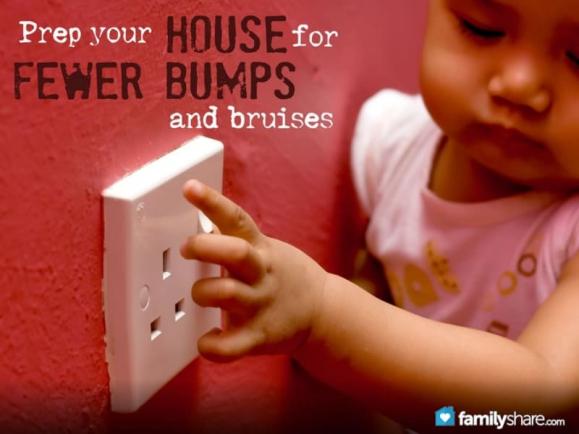
I am sure I am not the only parent who panicked a little bit when I brought my firstborn baby home. Being in charge of a child's health and well-being can be overwhelming. Fortunately, child safety is mostly common sense. With a little preparation and knowledge, you can keep your children safe from many hazards. You can't keep your children from all the bumps and bruises of childhood, but you can make their path toward adulthood less dangerous.
Prepare yourself
Consider taking CPR and first aid courses. CPR for children and infants is different than for adults, so learn how to aid your children properly. Learn how to swim and how to rescue distressed swimmers. Understand which foods pose choking and health hazards for young children.
Water
Children must always be supervised near water, even if it is a very shallow bath. Drowning can happen quickly. If you have a pool or hot tub, make sure it is completely inaccessible to children. When considering where to live, look for water features, canals, ponds etc. and determine if their presence is worth the risk.
Make sure your children take swimming lessons. Always have non-swimmers wear life jackets near larger bodies of water. Everyone should wear a life jacket when recreating on boats. As your children get older and use electric appliances like razors or hair dryers, warn them of the danger of electricity and water. The Red Cross offers helpful tips for water safety.
Home
Baby-proofing your home does not have to be daunting. Follow your child's lead before you latch every cupboard and cover every corner. My oldest daughter was busy, so we did close off outlets and put latches on the cabinets. Subsequent children were less curious, and we didn't have to baby proof much. One of the most important things you can do is use baby equipment that is safe and certified for infant and baby use. Womenshealth.gov offers a more comprehensive list of ways to make your home safe for your baby.
As children get older, teach them your family's rules for answering the door and the phone. Have a serious discussion about the danger of lighting matches or using the stove unsupervised. Things that adults know, like not to put metal items in the microwave, need to be explained to children who are gaining their independence. Gather your family together every few months and go over your fire safety plan. Store household chemicals and medications out of reach of small children and warn older children of their dangers.
Car
Child safety seat regulations vary by state and country. Research the guidelines for your area and seek help in choosing and installing the proper seat for your child. Teach older children to always wear their seatbelts no matter whose car they are riding in. Children should never play around or in cars. I have taught my children to stand on the front porch as I back the car out of our narrow driveway if they are out playing.
Out and About
Children love to ride bikes and take walks. Encourage your children to wear helmets as they ride bicycles, scooters and skateboards. Bike riders need to obey traffic signs and signals and use proper hand signals. Teach older children how to cross the street correctly while walking, using crosswalks and looking both ways. Have younger children watch your example as you cross streets together. I like to hold hands to keep my small children from darting across the road.
School
Children should feel safe at school. Make sure children with chronic illnesses or allergies know which foods or things to avoid, and how to get help should a need arise. Teach children to report bullying and follow the school's protocol for stopping inappropriate behavior. Frequent discussions with your children and their teachers will help you be more informed about their needs at school.
You can't always keep your children with you, but you can do your best to keep them safe. Follow these simple guidelines and prepare your children for a happy, harm-free life.

